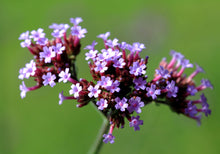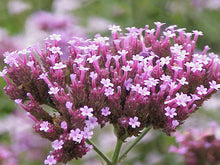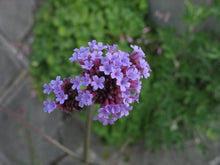
Common Name: tall verbena
Type: Herbaceous perennial
Family: Verbenaceae
Native Range: South America
Zone: 7 to 11
Height: 2.00 to 4.00 feet
Spread: 1.50 to 3.00 feet
Bloom Time: June to frost
Bloom Description: Rose-violet, lavender
Sun: Full sun to part shade
Water: Medium
Maintenance: Low
Suggested Use: Annual
Flower: Showy
Attracts: Butterflies
Tender perennial that is winter hardy to USDA Zones 7-10. In St. Louis, grow as an annual in average, moist, well-drained soils in full sun to part shade. Tolerates poor soils as long as drainage is good. Seed may be sown directly in the garden after last frost date. For earlier bloom, start seed indoors 6-8 weeks before last frost date. Set out seedlings or purchased plants after last frost date. If sited in sheltered locations with southern exposures, plants can survive mild St. Louis winters. Even if plants do not survive winter, they often remain in St. Louis gardens for a number of years through self-seeding. Plants more freely self-seed in the deep South where they have escaped gardens and naturalized in a number of areas.
Noteworthy Characteristics
Verbena bonariensis, commonly called Brazilian vervain, is a rapid-growing, clump-forming tender perennial. In St. Louis, plants typically form a 1-foot tall basal clump of serrate, lance-shaped, dark green leaves (to 5” long) from which rise erect, slender, wiry, branching, sparsely-leaved, 4-angled stems to 3.5’ tall bearing clusters (to 2” across) of tiny rose-violet flowers. Blooms mid summer to fall. Synonymous with V. patagonica.








